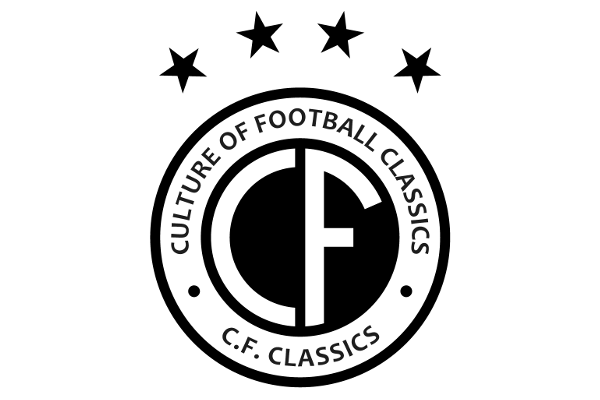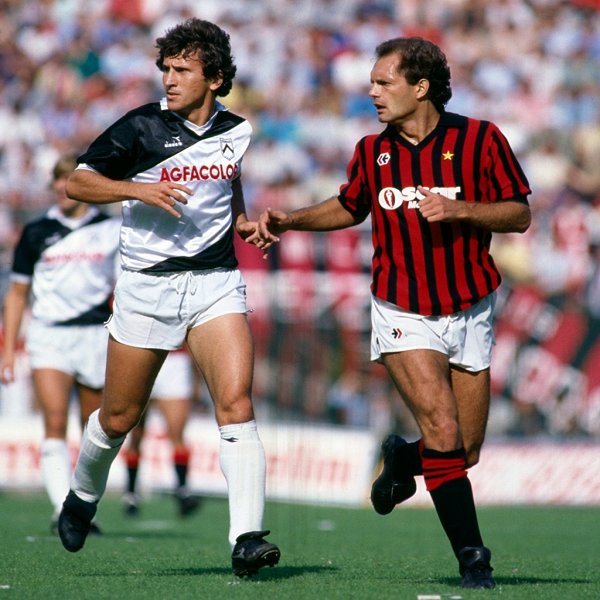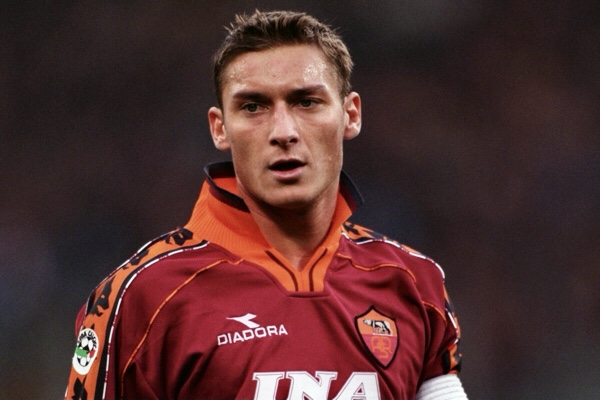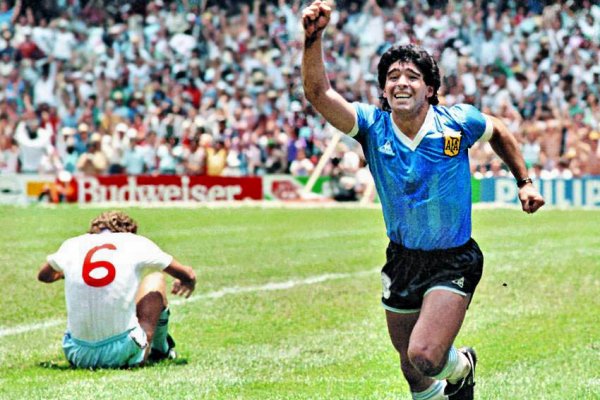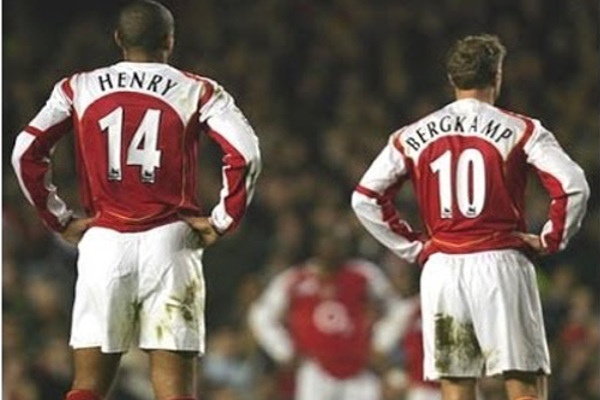Great Playmakers of the 1980s
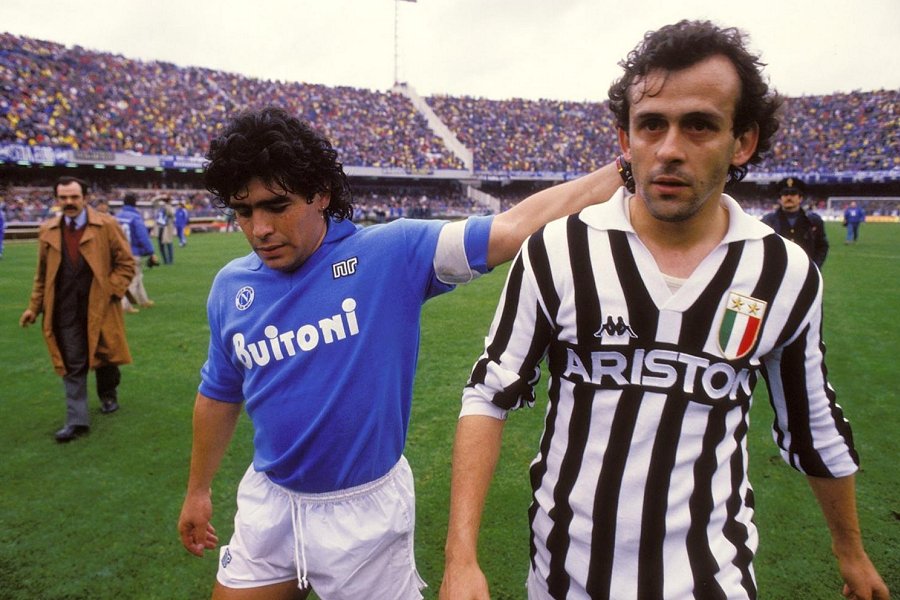
Diego Maradona and Michel Platini, two great playmakers of the 1980s.
Photo: Wikimedia Commons
No.1 Diego Maradona
The sheer amount of iconic Maradona moments tells the story.
Clubs in the 1980s: Argentinos Juniors (1980-81). Boca Juniors (1981-82). Barcelona (1982-84). Napoli (1984-90).
No.2 Michel Platini
Platini was also one of football's greatest penalty takers, his coolness under pressure from the twelve yard spot made him the perfect candidate when the occasion needed it.
Clubs in the 1980s: Saint-Étienne (1980-82). Juventus (1982-87).
No.3 Zico
Whilst South America was already well aware of Zico's talents in the 1970s (he'd been named runner-up in the South American Footballer of the Year in 1976, and then won it in 1977), it was the 1980s when the Brazilian's phenomenal talents really came to prominence to the rest of the world.
A product of Flamengo's youth-system, Zico helped propel the cub to the best period in its history in the 1980s, winning three Campeonato Brasileiro Série A titles, the Copa Libertadores and then famously demolishing Liverpool to win the 1981 Intercontinental Cup.
It was with Brazil though, for which Zico became best known to a whole generation of football fanatics, and his part in that fabulous 1982 World Cup team. In those three weeks Zico showcased his entire array of playmaking talents. Deadly free-kicks, pinpoint long-range passing, defence-splitting through balls, incredible dribbling, combination play, inventive flicks and dummies. It was so creative, so imaginative, so beautiful that you were desperate to get outside and try it yourself. And there can be no greater compliment to pay to a footballer than youngsters desperately wanting to imitate them.
Clubs in the 1980s: Flamengo (1971-83). Udinese (1983-85), Flamengo (1985-89).
No.4 Gheorghe Hagi
Outisde of Argentina, there have been plenty of players who have been labelled as the alternative Maradonas, but Hagi, as the "Maradona of the Carpathians", is probably the most famous, and the most fitting.
Whilst he would shine brightly at a global level in the 1990s he would also light up the 1980s with some phenomenal performances for both club and country, most notably in the Steaua Bucuresti team that would become a feared opponent in Europe for the continent's wealthy and established elite clubs. They'd famously won the European Cup against the odds in 1986 when they beat Terry Venables Barcelona side on penalties. In the 1988-89 season they were at it again, romping through the rounds with goals flying in, Hagi scoring six goals in the eight games that lead up to the final, whilst team-mates Marius Lacatus and Ilie Dumitrescu also contributed eleven goals between them. It was this run to the final that really elevated Hagi to the attention of fans and media across Europe. Unfortunately, in the final, Hagi and Steaua came up against a Milan side that was at the very peak of its form, a team that had demolished Real Madrid 6:1 in the semi-finals, so a 4:0 defeat at the Camp Nou was a disappointing end to their European campaign.
Clubs in the 1980s: Sportul Studentesc (1980-87). Steaua Bucuresti (1987-90)
No.5 Dragan Stojkovic
There are some players from the world of football who, despite suffering from serious injuries during their careers, are still renowned for their ability. Dragan Stojković was one of those players.
A classic midfield playmaker, Dragan Stojković was renowned for his passing ability and vision, a player who could keep things simple, quickly stitching the play together between defence and attack, or use his creativity to pick out a more spectacular pass. His game wasn't just limited to his passing skills though, Stojković was fantastic with the ball at his feet, his dribbling skills and technique allowing him to carry the ball
No.6 Giancarlo Antognoni
One of the greatest ever Italian playmakers, Antognoni's range of skills meant he was capable of playing either in an advanced role as a traditional number 10, or further back, as a deep-lying playmaker.
Clubs in the 1980s: Fiorentina (1980-87). Lausanne Sports (1987-89)
No.7 Liam Brady
Whilst Liam Brady is best remembered in England for his seven years at Arsenal in the 1970s, we're also including him in the 1980s playmakers list because of his time in Italy. As is often the case with the British media, once he'd left these islands it was almost as if he'd stopped playing football, as hardly anything was heard about him in the mainstream newspapers, but for those of us reading the likes of World Soccer and avidly following the European competitions and Serie A, we were well aware of how well he was doing over in Italy.
Brady's elegance on the ball in the hustle and bustle of the English game had made him stand out more than any other midfielder in the late 1970s, and he was on the radar of a number of Italian clubs as Serie A decided to open itself up once again to foreign signings at the end of the decade. Juventues scout Gigi Peronace was one of those who'd been impressed with the Irish midfielder's fantastic vision and passing range, and his performances against the Turin giants in the semi-finals of the 1979-80 UEFA Cup Winners Cup sealed his move to the club. He would also go onto play for Sampdoria, Inter and Ascoli in Italy, before returning to England for a career swansong at West Ham United.
Clubs in the 1980s: Juventus (1980-82). Sampdoria (1982-84). Inter (1984-86). Ascoli (1986-87). West Ham United (1987-90).
No.8 Bernd Schuster
The 1980 European Championships were the first Euros that CF Classics can really remember, and whilst it wasn't the best tournament, with small crowds and trouble on the terraces, it was worth watching just to see a couple of young midfield playmakers showcasing their talents. Given that we'd been led to believe that West Germany's style would be all functional and practical rather than flair and imagination, it came as something of a surprise that the two players in question were German, one being the dark-haired Hansi Muller and the other, with a mop of blond hair, Bernd Schuster. Unfortunately, it would be the highlight of both their international careers. Yet, whilst Muller would struggle to recapture that form at club level, Schuster would go on to have a stellar career in Spain with all of the big three LA Liga clubs; Barcelona, Real Madrid and Atlético Madrid.
Clubs in the 1980s:
No.9 Enzo Scifo
Clubs in the 1980s: Anderlecht (1983-87). Inter (1987-88). Bordeaux (1988-89). Auxerre (1989-91).
No.10 Glenn Hoddle
Clubs in the 1980s: Tottenham Hotspur (1975-87). Monaco (1987-91).
No.11 Falcão
Clubs in the 1980s: Roma (1980-85). Sao Paulo (1985-86).
No.12 Michael Laudrup
Clubs in the 1980s:
No.13 Enzo Francescoli
Clubs in the 1980s:
No.14 Lakhdar Belloumi
A wonderfully gifted attacking midfielder, Lakhdar Belloumi is widely regarded as the greatest Algerian footballer of all-time, and one of the greatest African players of all-time.
Belloumi's probably not as well known as many other great players of his era because Algeria had a law at the time that forbade any player from leaving the country before the age of 27. So, despite interest in 1981 from a number of huge European clubs, including Barcelona, Belloumi had to reman in his homeland, playing for GCR Mascara. Whilst that ruling meant that we missed out on seeing him grace European football competitions, we were lucky enough to see him at Espana'82, immediately wondering who on earth this player was, and why we'd never heard of him before. Forming a fine attacking trident along with Salah Assad and Rabah Madjer they would have gone through the group stages if it wasn't for the events at the last match between West Germany and Austria, which became known as the Disgrace of Gijón.
You can find more information and detail on some of these great playmakers and number 10s on our football player profiles section, and please feel free to contact us if you feel like we've missed someone out who you think deserves to be on the list.
Tweet
